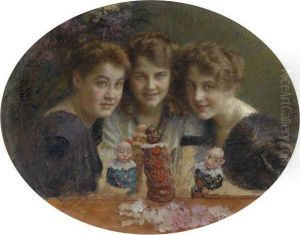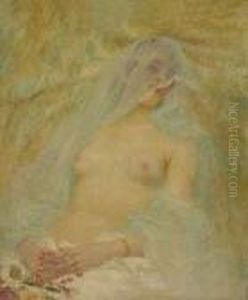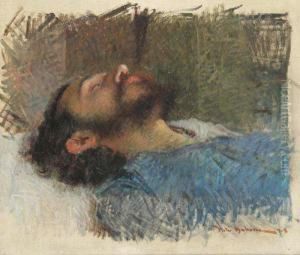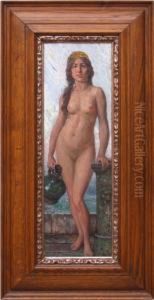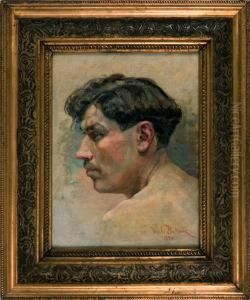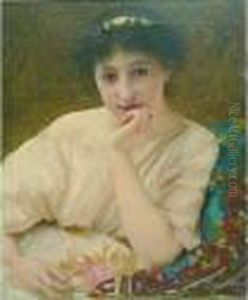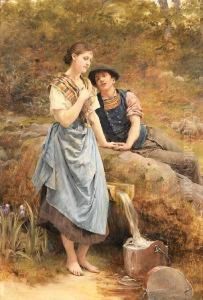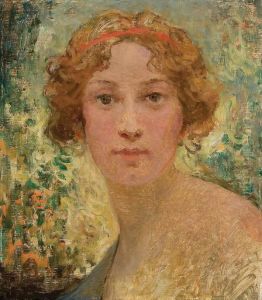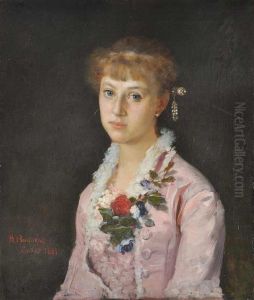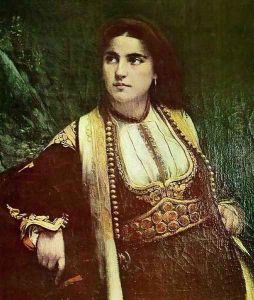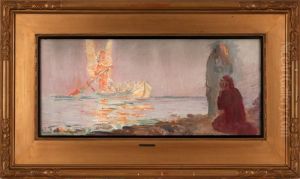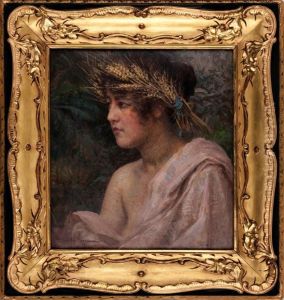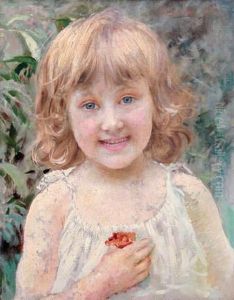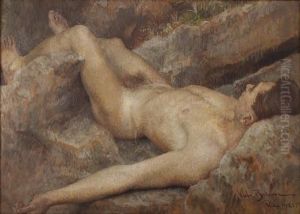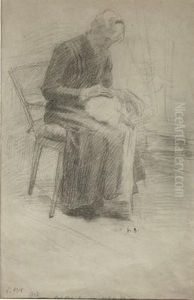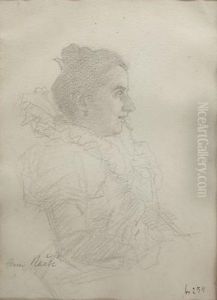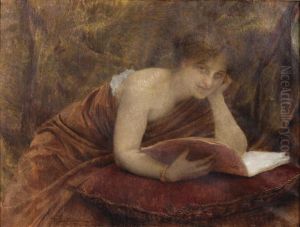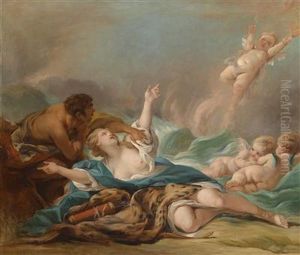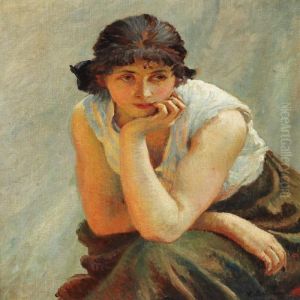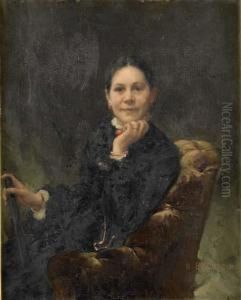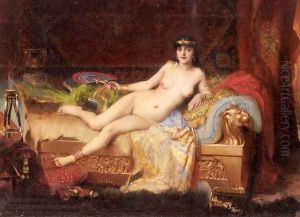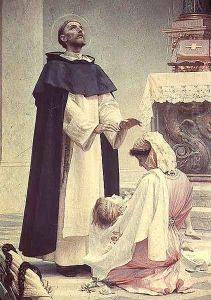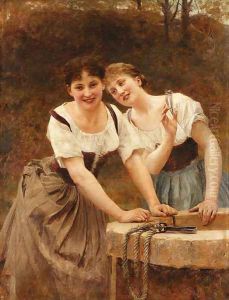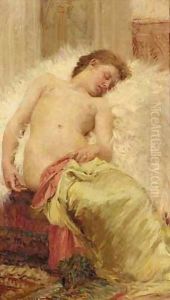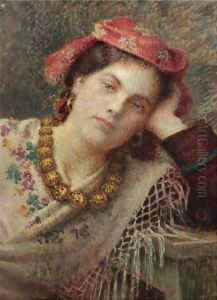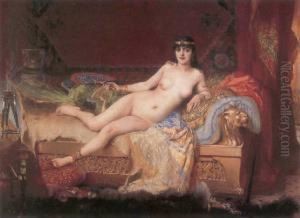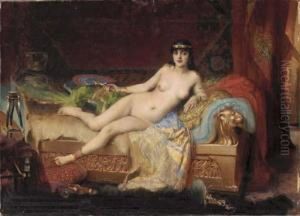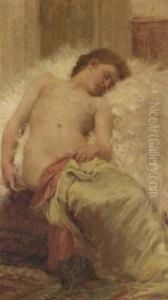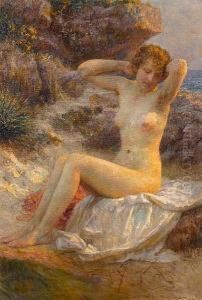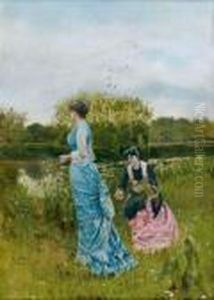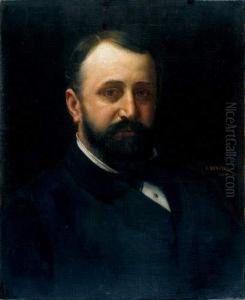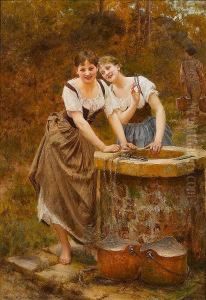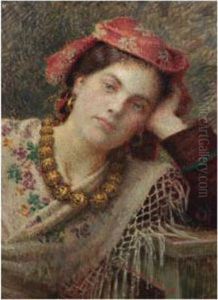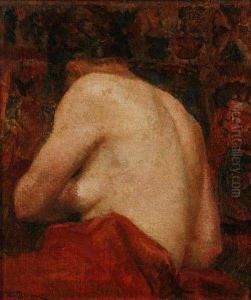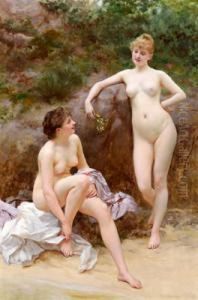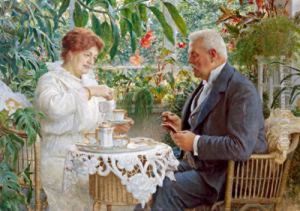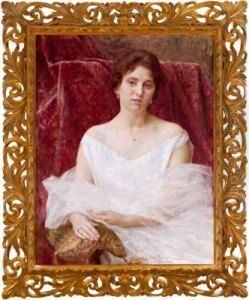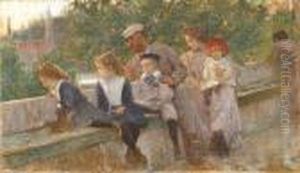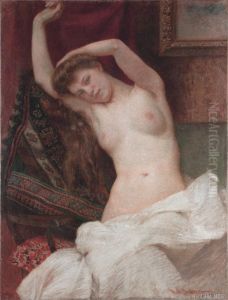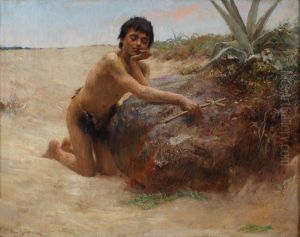Vlaho Bukovac Paintings
Vlaho Bukovac was a distinguished Croatian painter, born on July 4, 1855, in Cavtat, a picturesque coastal town in the Dubrovnik-Neretva County of Croatia. His birth name was Biagio Faggioni, but he is best known by his Croatian name. Bukovac's journey in art began in a rather unconventional manner, as he started his painting career by decorating the interiors of ships during his time at sea. This experience, though not formal, marked the inception of his lifelong engagement with art.
Bukovac went on to formally study art in Paris at the esteemed École des Beaux-Arts under the tutelage of the renowned French painter Alexandre Cabanel. During his time in Paris, he became a part of the vibrant art scene, absorbing the influences of the Impressionist movement, which subtly permeated through his own works. His style, however, remained firmly rooted in the academic traditions of his education, characterized by a refined realism and a masterful use of color.
Throughout his career, Bukovac travelled extensively, living and working in various European cities, including a significant period in Prague where he was instrumental in shaping the modern art scene. His influence extended beyond his own works as he played a crucial role in the development of modern Croatian art, contributing to the cultural revival of the region. Bukovac's paintings often depicted scenes from everyday life, portraits, and landscapes, marked by a vibrant palette and a sensitive touch in capturing light and atmosphere.
Vlaho Bukovac's legacy is preserved through his contributions to Croatian art and culture, with numerous works housed in galleries and museums across Croatia and Europe. His home in Cavtat has been transformed into a museum dedicated to his life and work, celebrating his contributions to the art world. Bukovac passed away on April 23, 1922, in Prague, leaving behind a rich body of work that continues to inspire and captivate art enthusiasts around the globe.
